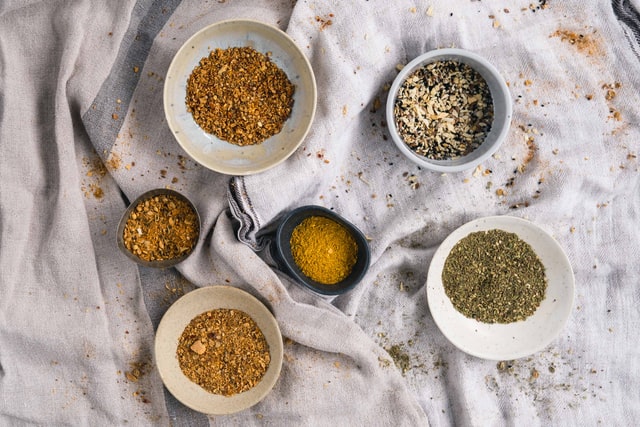|
1/29/2020 Indian spices
Indian food is, of course, unimaginable without spices. The complex, multilayered flavours associated with the best Indian food are achieved through careful cooking and the artful combination of usually small amounts of several different spices. In music, single notes are played in combination to form chords - a harmonious melding of the separate elements to form a rich whole. Used correctly, spices can work in the same way, striking their own note yet contributing to an overall, complex effect that is somehow more than the sum of its parts. Which particular spices are used and how they're cooked will vary slightly depending on the dish and the region from which the dish originates. But throughout India, you'll find the same basic spices used over and over again; at first you'd think that this would mean that all dishes end up tasting the same but, in fact, even a subtle variation in the balance of quantities of each spice, or the method by which the spices are tempered (see pages 12-14) can make a striking difference to the finished flavour. The beauty of home cookingYou may have eaten in an Indian restaurant and been disappointed to find the flavours in the meat, fish and vegetable dishes to be very similar - it is not unknown for restaurants to have a ready-prepared masala which they use as the base for all their dishes. This approach, however, cannot result in anything but unremarkable dishes - one spice balance is not going to suit all foods. This is where home cooking wins over mass production every time: an experienced cook like Rose can tailor the masala for each dish specifically to achieve a fine balance between the flavour of the spices and what should be the 'star' of the dish - the main component, be it vegetables, meat or fish. Spice shoppingSurprisingly, a relatively limited palette of core spices is all you need to cook a huge variety of dishes. Alongside a selection of whole spices, seeds and ground spices (see overleaf), we use two spice blends frequently - garam masala and dhana jiru. Both can be bought ready-ground but, in the case of garam masala, I'd urge you to steer well clear of proprietary blends: they tend to lack character (in aiming to offend no one they also fail to excite). You'll have better results if you take the time to make your own - follow the recipe on page 17. Dhana jiru, a classic Indian blend that's used widely, can be surprisingly tricky to get hold of, so we've included a recipe for it too (see overleaf).
We also use two other spice blends in some of our recipes, and these are ready-made blends: hot Madras curry powder and tandoori masala. When our recipes use ready-made spice blends, we tend to throw in other pure spices: the blandness of bought spice blends can be successfully alleviated by deft customisation. Be very fussy about what you buy. Look for Indian blends (and do check the ingredients don't include alien items such as monosodium glutamate, maize starch, and artificial colours or preservatives). Find a brand you like and stick with it. Always buy small quantities and use up your stock quickly so that it remains fresh." -from Cooking with my Indian mother-in-law by Simon Daley (with Roshan Hirani) Comments are closed.
|
Archives
November 2020
Categories |

